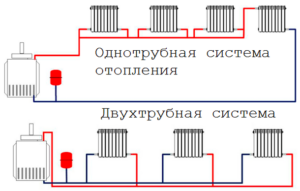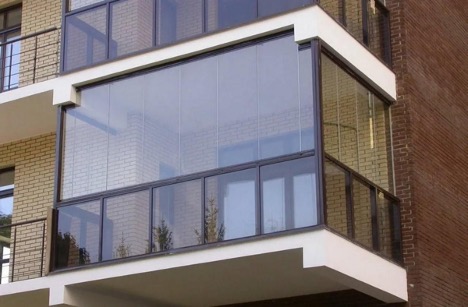Central heating system and how it works: classification of systems
Central heating - this is a heating system, a heat source, in which it is located in a separate room, for example, at a thermal power plant. Moreover, the thermal station is often located far from residential buildings - about 10-20 km. This system has its advantages, but there are also some disadvantages. An overview of the main types and devices is presented below.
The content of the article
Heating system design
A heating system is a combination of many elements of heating, water supply, temperature and pressure control. It provides a full cycle of coolant circulation from the boiler room to the consumer and back. The main elements of such a system are presented in the diagram.
Here the numbers indicate:
- Actually water, which is used as a coolant.
- Chemical workshop for water purification. As a rule, local heating is a thermal power plant, which independently selects and prepares the liquid, and then sends it through the pipes in an already filtered form.
- Space heating involves heating water to a certain temperature. This happens directly at the thermal power plant in installed boilers. They can run on solid fuels such as fuel oil, liquid or gaseous.
- Chimney - for removing gases that are formed during fuel combustion.
- A turbine is a device that rotates under the influence of heated steam.The generator is then turned on to produce electricity.
- A heat exchanger is a container in which water is heated and then moves through pipes to radiators. This is how dynamic heating is achieved.
- Reverse steam removal is a system for removing excess volumes of evaporation. After cooling, the steam condenses again, turns into a liquid and enters the pipes.
- Main pipes supply coolant from the thermal power plant for local heating. Their length cannot exceed 40 km (usually up to 20 km). Otherwise, the water will cool down greatly.
- A heat pump station is a system for pumping water in pipes under a certain pressure.
- The central heating point is a transit hub for receiving water from the thermal power plant and further transferring it to homes.
- The second heat exchanger, after which the liquid goes directly to the house.
- Quarter pipes are used to supply coolant directly to houses. This is how buildings and structures are heated.
- Piping inside the house distributes the coolant across floors, apartments and other rooms.

Types of central heating system
From the described diagram it is clear how the heating system works. But for a complete overview, it is necessary to consider what types it comes in. The main classification is related to the method of supplying and discharging water. Based on this criterion, there are 2 schemes:
- Single-pipe.
- Two-pipe.
Single-pipe
This scheme received its name due to the fact that it involves the installation of one pipe to which radiators are connected. Water approaches the batteries from this pipe and goes into it. Then from the last battery in the chain it moves back to the boiler, heats up, and the cycle is repeated many times.

This type of circuit has quite a few advantages:
- savings on materials - only one pipe is installed;
- it looks more aesthetically pleasing in appearance - it’s quite easy to hide it in a niche, floor or wall;
- simpler and more affordable installation.
But there are also disadvantages, and significant ones:
- radiators heat up unevenly - the first one is faster, the second one and the next one take longer;
- due to an accident in one fragment of a section, for example, in a battery, the entire circuit has to be turned off;
- such a system is less resistant to water hammer and other emergency situations.
Two-pipe
The classification of water heating systems also involves the identification of a two-pipe scheme. It involves supplying water to the battery through one pipe, and draining it through another. This fundamentally differs the system from a single-pipe system, as can be seen in the figure.

Thanks to the separation of the supply and discharge flows, the two-pipe circuit provides quite a lot of advantages:
- all radiators heat up evenly, regardless of their proximity to the boiler;
- You can put a thermostat on each battery to adjust the temperature (for example, you can make it hotter in one room, cooler in another);
- the system is much more resistant to pressure and temperature changes;
- If repairs are necessary, it is enough to shut off only one radiator without touching the entire circuit.
However, there are also disadvantages:
- the price is higher because more materials are required;
- installation work is more difficult to carry out, and therefore will also cost more;
- This scheme uses 2 pipes, so outwardly it does not look as compact and attractive as a single-pipe one.
In general, it is central heating that shows the greatest reliability and efficiency. Even in the event of a serious accident, it is possible to restore functionality within 24 hours (usually within a few hours).In practice, when constructing apartment buildings, a two-pipe system is almost always used. This is a universal design that can also be used in private homes.





